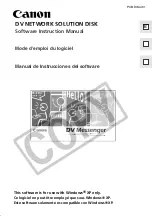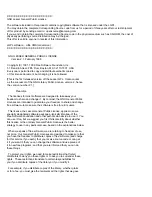
S e n d c o m m e n t s t o n x 5 0 0 0 - d o c f e e d b a c k @ c i s c o . c o m
2-105
Cisco Nexus 5000 Series Command Reference
OL-16599-01
Chapter 2 Ethernet Commands
vrf context
vrf context
To create a virtual routing and forwarding instance (VRF) and enter VRF configuration mode, use the
vrf context
command. To remove a VRF entry, use the
no
form of this command.
vrf context
{
name
|
management
}
no vrf context
{
name
|
management
}
Syntax Description
Command Default
None
Command Modes
Configuration mode
Command History
Usage Guidelines
When you enter the VRF configuration mode, the following commands are available:
•
exit
—Exits from the current command mode.
•
ip
—Enables configuration of IP features.
Additional commands available in IP configuration mode:
–
domain-list
—Adds additional domain names.
–
domain-lookup
—Enables or disables DNS lookup.
–
domain-name
—Specifies the default domain name.
–
host
—Adds an entry to the IP hostname table
–
name-server
—Specifies the IP address of a DNS name server
–
route
—Adds route information by specifying IP addresses of the next hop servers.
•
no
—Negates a command or set its defaults.
•
shutdown
—Shuts down the current VRF context.
Examples
This example shows how to enter VRF context mode:
switch(config)#
vrf context management
switch(config-vrf)#
name
Name of the VRF.
management
Specifies a configurable VRF name.
Release
Modification
4.0(0)N1(1a)
This command was introduced.















































